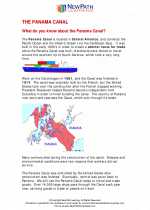Tahiti
Tahiti is the largest island in the Windward group of French Polynesia, located in the central Southern Pacific Ocean. It is famous for its stunning natural beauty, including lush rainforests, clear turquoise waters, and beautiful beaches. Tahiti is also known for its rich Polynesian culture and history.
Geography
Tahiti is divided into two parts: Tahiti Nui (larger, western section) and Tahiti Iti (smaller, eastern section). The island is volcanic in origin and is surrounded by coral reefs. Mount Orohena is the highest peak in Tahiti, rising to an elevation of 7,352 feet (2,241 meters).
History
Prior to European contact, Tahiti was inhabited by Polynesians. The island was first visited by Europeans in 1767 and was later claimed by France in 1880. Tahiti became a French colony and is now an overseas collectivity of France.
People and Culture
The people of Tahiti are predominantly of Polynesian descent and the official languages are French and Tahitian. The culture of Tahiti is characterized by traditional music, dance, and art, as well as the practice of tattooing and the production of intricate wood carvings.
Tourism
Tahiti is a popular tourist destination, known for its luxury resorts, overwater bungalows, and opportunities for activities such as snorkeling, diving, and hiking. Visitors to Tahiti can also experience traditional Polynesian cuisine and attend cultural performances.
Study Guide
- What are the two main sections of Tahiti?
- Which European country claimed Tahiti as a colony?
- What is the highest peak in Tahiti?
- What are the official languages of Tahiti?
- What are some popular tourist activities in Tahiti?
For more in-depth study, consider exploring the history of European exploration and colonization in the Pacific, the impact of French colonialism on Tahiti, and the significance of traditional Polynesian culture in the modern context.
.◂Social Studies Worksheets and Study Guides Sixth Grade. Panama Canal

 Worksheet/Answer key
Worksheet/Answer key
 Worksheet/Answer key
Worksheet/Answer key
 Worksheet/Answer key
Worksheet/Answer key
